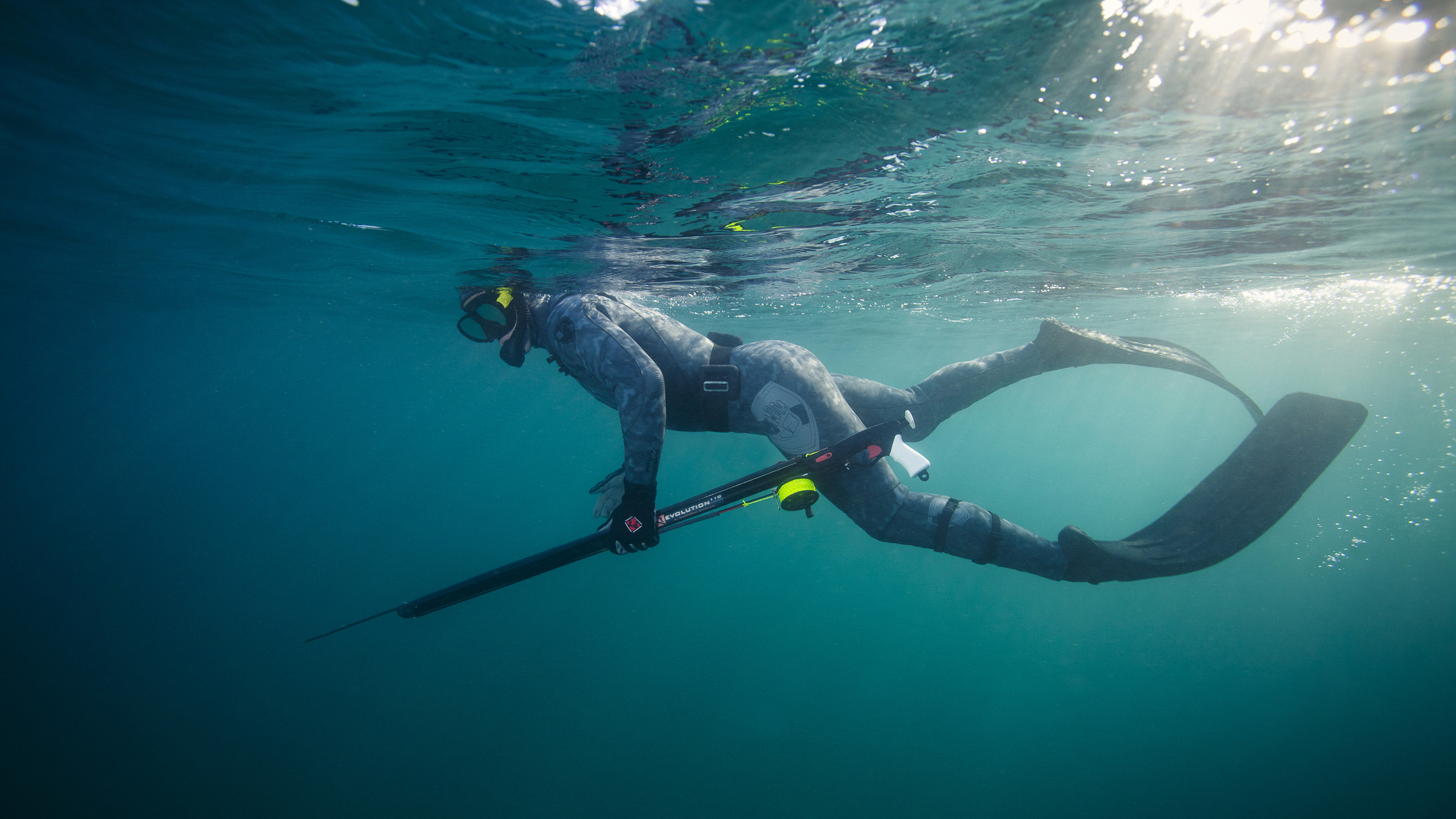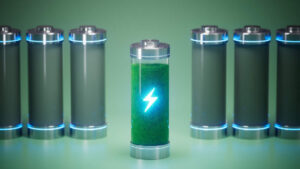Beyond Gold and EVs – The ASX companies spearheading the Aussie integrated battery economy

Pic:Getty Images
- Several ASX-listed companies working to make most of downstream opportunities in battery tech sector
- LIT establishing a circular battery economy by way of its three vertically integrated business divisions
- Renascor Resources has secured a site for its proposed Battery Anode Material Manufacturing Facility
Rich in all sorts of resources, Australia is quickly becoming a powerhouse producer of rare earths and critical minerals such as lithium, graphite, cobalt, tungsten and nickel as the world moves to reduce greenhouse gas emissions.
But there are also moves to ensure Australia makes the most of opportunities in the battery technology sector beyond upstream exploration and mining.
So, who are some of the players looking mid and downstream in Australia’s battery tech manufacturing sector?
Anteotech (ASX:ADO)
Graphite has been the stalwart anode material for much of the early production phase of the Li-ion battery chemistry, however, developers are now turning to silicon’s unique characteristics to meet the high energy demands of the EV market.
For the next generation of lithium-ion batteries, silicon is being seen as a promising anode material based on its ability to increase battery capacity, decrease charging times, and lower costs.
Brisbane-based ADO is developing additives and advanced binder technology to boost the performance of silicon containing anodes.
ADO’s AnteoX tech has been recognised as an emerging leader within the battery manufacturing and battery storage space after winning the Renewable Energy Award and the Australian Technologies Competition in December 2022.
According to ADO, AnteoX is a powerful additive that reinforces battery binders and helps maximise the performance of silicon containing anodes through increasing capacity, extending cycle life, thus enabling lighter and more compact high energy lithium-ion batteries to be manufactured.
Altech Batteries (ASX:ATC)
Table salt to make a battery? ATC’s CERENERGY® technology uses cheap common table salt and ceramic solid-state technology to reduce costs by up to 50% compared to regular lithium-ion batteries.
The CERENERGY® sodium-alumina solid state battery project is specially designed to meet the needs of the grid energy storage market, which is projected to grow in value from US$4.4bn last year to US$15.1bn by 2027.
Advantages include being fire and explosion-proof, the ability to operate in a wide range of temperatures, as well as having life spans of more than 15 years.
ATC has a joint venture with applied research organisation Fraunhofer-Gesellschaft which is working to commercialise the 100 megawatt hour production facility at the Schwarze Pumpe Industrial Park in Saxony, Germany, on land owned by Altech.
Fraunhofer has already tested the world’s largest CERENERGY® batteries in terms of capacity in stationary battery modules.
Li-S Energy (ASX:LIS)
LIS is at the forefront of battery cells innovation. Lithium sulfur (Li-S) batteries are considered attractive candidates for next-generation energy storage because sulfur is abundant, low-cost and sustainable, unlike heavy metals used in lithium-ion batteries.
They are also considered as offering potentially the highest energy storage. But there’s a catch with the problem so far – Li-S batteries tend to fail after a low number of recharge cycles, making them uncommercial.
It’s a problem Brisbane-based LIS is confident of solving with the company working to commercialise a decade of scientific research in the development of Li-S batteries.
With leading researchers at Deakin University LIS has shown that integrating Boron Nitride Nanotubes (BNNTs) and its patented nanocomposite Li-nanomesh into lithium sulfur batteries can create a cell approaching twice the energy density and a similar cycle life to that of consumer grade lithium-ion batteries.
Li-S has also inked a deal with leading US e-aviation company magniX, which will test the potential of the company’s lithium sulfur and lithium metal cell technology for e-aviation applications.
Lithium Australia (ASX:LIT)
LIT has evolved from an explorer into lithium tech company. LIT is establishing what it called a “circular battery economy” to ensure resource security by way of its three vertically integrated business divisions – recycling, batteries and chemicals.
The company’s 100% company-owned subsidiary Envirostream is focused on the efficient recovery of critical minerals from end-of-life batteries (especially lithium-ion batteries).
The use of those chemicals can then be used in the production of new lithium-ion batteries by LIT’s subsidiary VSPC.
The third vertical is energy-efficient recovery of lithium from spodumene that is discarded by traditional lithium-chemical conversion, as well as mine waste, via its patented processing technologies LieNA and SiLeach to create primary battery chemicals.
The ADO, ATC LIS & LIT Share price today:
Australian Vanadium (ASX:AVL)
While AVL is nearing development at its flagship Australian vanadium project in WA it is also ensuring it makes the most of downstream opportunities in the vanadium market.
Specifically, AVL is tapping in on vanadium electrolyte manufacturing and opportunities in the vanadium redox flow battery (VRFB) market through its subsidiary VSUN Energy.
VRFBs are considered safer as they don’t catch fire, more scalable, and longer lasting than their lithium counterparts with a lifespan of more than 20 years.
VSUN is installing a battery system at the IGO (ASX:IGO) Nova nickel operation.
It has also been working to develop a 5kW/15kWh residential version of the VRFB for people who are looking for an alternative to lithium-ion batteries.
Renascor Resources (ASX:RNU)
RNU is focused on exploring, producing and developing mineral resources for clean energy including graphite, copper and uranium. It’s core asset is the Siviour Graphite Project on the Eyre Peninsula, in South Australia, which is the largest reported graphite Reserve outside Africa.
RNU also plans to build a state-of-the-art processing facility in South Australia to manufacture purified spherical graphite through its eco-friendly purification process.
The company has secured the site for its proposed Battery Anode Material Manufacturing Facility in South Australia from the South Australian Government-owned utility SA Water.
RNU has also received South Australian Government approval for the Program for Environment Protection and Rehabilitation (PEPR), a key approval that paves the way for its proposed Siviour Mine and Concentrator.
The Siviour Project has been granted Major Project status by the Federal Government. RNU has also secured conditional approval for a $185 million loan facility from the Australian Government’s $2 billion Critical Minerals Facility, to support the development of the Siviour Project.
Neometals (ASX:NMT)
NMT is an emerging sustainable battery materials producer with plans to produce nickel, cobalt and lithium from production scrap and end-of-life LIBs in an incorporated JV with leading global plant builder and German engineering group SMS group.
Dubbed the ‘Primobius JV’, the company operates a commercial disposal service at its 10tpd Shredding ‘Spoke’ in Germany and is the recycling technology partner to Mercedes Benz.
NMT also has a collaboration agreement with unlisted Scandinavian mineral development company Critical Metals Ltd to jointly evaluate the feasibility of constructing a recycling facility to recover and process high-grade vanadium products from vanadium-bearing steel by-product in Scandinavia.
NMT is Critical Metals’ largest shareholder and holds 15.4% of its issued capital.
The company also wholly owns the Barrambie titanium and vanadium project in WA, which has a granted mining permit and has been the subject of approximately $30 million in exploration and evaluation expenditure since 2003.
Hannans (ASX:HNR)
HNR was re-admitted to trading on the ASX in December 2022 with a focus on LiB recycling and associated activities.
The company has rights (via licensing arrangements) to commercialise the lithium battery recycling technology developed by Neometals, which is HNR’s largest shareholder (26.09%).
HNR recently announced its wholly-owned subsidiary Hannans BatRec (Europe) has inked a binding market development agreement with G&P Battery Recycling Limited (GPBR) in the UK.
Terms of the HNR deal with GPBR include a four-year undertaking by GPBR to deliver 16,800 tonnes of qualifying LiB feedstock (subject to entry into a formal feedstock supply agreement) for a proposed battery recycling operation to be formed in the UK (Hannans Shredding Spoke).
HNR has also granted GPBR the right to earn up to a 20% total participating interest in the proposed UK entity that will operate the Hannans Shredding Spoke by meeting its minimum commitment.
The AVL, RNU, NMT & HNR share price today:
Avenira (ASX:AEV)
AEV inked a non-binding deal with LFP battery manufacturer Aleees and the NT government in September 2022 to build a battery cathode manufacturing plant in Darwin, leveraging Avenira’s flagship 67 Mt Wonarah phosphate project.
“AEV said wth the Wonarah Project working towards production of phosphoric acid, and the availability of other abundant battery metals such as ithium and iron in Australia, the next step of producing LFP cathode material is a logical value-add for all parties,” the company said.
The NT Government indicated as part of the MOU that it will work proactively with Aleees and AVE to assist and advise where appropriate in relation to necessary infrastructure including water, energy, power, telecommunications, road, port and rail access and service requirements.
AEV said Aleees is a globally recognised LFP battery cathode material manufacturer. It is one of the few companies outside China with complete LFP cathode material manufacturing capability and patents for electric vehicle and stationary storage batteries.
Aleees owns more than 120 exclusive patents worldwide, with customers including investment grade energy storage battery and EV battery customers across Europe, US, Japan, Korea, and Asia.
Volt Resources (ASX:VRC)
VRC is focused on the exploration and development of its wholly-owned graphite and gold projects in Tanzania and Guinea, as well as its 70% interest in the ZG Group in Ukraine.
But it is also has a downstream strategy and has started a feasibility study to support the capital cost estimate, operating cost summary and financial model for its planned battery anode material (BAM) plant.
VRC expects the feasibility study will be delivered by September 2023 and has engaged Worley Services Pty Ltd, a wholly-owned subsidiary of Worley Group (ASX:WOR), to help prepare parts of the study.
“While mining and processing of raw materials is the foundation of the Company, Volt anticipates greater value creation will be derived from being a vertically integrated manufacturer of natural graphite anode materials within the US and European markets,” CEO Prashant Chintawar said.
“Due to a strong market interest in local natural graphite anode, supply deficit, and robust financial incentives from Governments, we expect the feasibility study to deliver highly favourable project economics.”
La Trobe Magnesium (ASX:LMG)
LMG has developed a world-first patented process to extracts magnesium metal and valuable by-products from magnesium rich waste feedstocks.
It is developing a 1,000 tonne-per-annum magnesium demonstration plant in Victoria’s Latrobe Valley. The plant will extract magnesium metal and valuable by-products from magnesium rich waste feedstocks with production due to start in mid-2023.
It will process almost 100% of fly ash into valuable products including magnesium metal, Supplementary Cementitious Material (SCM), silica, char, iron oxide and calcium carbonate.
LMG said its low CO2 process can address potentially hazardous waste stockpiles and produce valuable products with downstream environmental benefits.
The company also recently announced it had selected Samalaju Industrial Park in Sarawak, Malaysia as the preferred location for its 100,000-tonne-per-annum magnesium plant project.
LMG said the Samalaju Industrial Park’s presence of hydroelectric power generation will enable the plant to operate with 100% renewable energy.
The AEV,VRC & LMG Share price today:
Are we missing any stocks in this story? email [email protected]
At Stockhead, we tell it like it is. While Altech Batteries, is a Stockhead advertisers, it did not sponsor this article.

UNLOCK INSIGHTS
Discover the untold stories of emerging ASX stocks.
Daily news and expert analysis, it's free to subscribe.
By proceeding, you confirm you understand that we handle personal information in accordance with our Privacy Policy.







